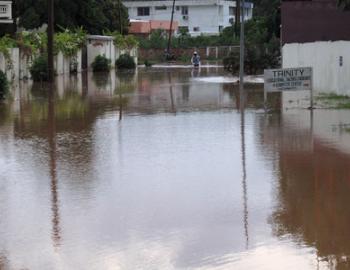GUIDE: Tackling exposure: placing disaster risk management at the heart of national economic and fiscal policy
GUIDE: Tackling exposure: placing disaster risk management at the heart of national economic and fiscal policy
2011 was the costliest year on record for disasters - in economic terms - with estimated global losses of US$380 billion.
Not only were aggregate losses extremely high but the distributional and knock-on effects were also large. Recent data suggests that the floods in Thailand reduced Japan’s industrial output by 2.6% in November 2011 compared to the previous month, due to disruption to electronics and automotive supply chains.
The 2011 losses extend a trend that has seen global average economic disaster losses rise by 200% over the last 25 years in inflation-adjusted terms. The trend is predominantly the result of more people and assets being located in areas exposed to natural hazards.
While recent data suggests disasters are already hampering economic growth in low and middle-income countries, a continuation of the current upward trend in disaster losses poses a severe threat to both national and regional macroeconomic outlooks in such countries.
Tackling this problem involves placing measures to address disaster risk at the heart of national economic and fiscal policy, as well as embedding them within sector-based economic and land-use planning. At a national level, reducing losses or even stemming their increase will require investment to reduce the vulnerability of people and infrastructure located in exposed areas, or enacting policies that over time result in a safer spatial distribution of people and assets.
Economic, fiscal and territorial planning policies can all reduce exposure to hazards, but to be successful they need to ensure policies are based on national risk atlases and disaster risk assessments that appreciate the dynamic nature of risks. This information will need to be factored into national and provincial budgets, land-use plans, infrastructure investments and poverty alleviation measures.
While several far-sighted countries are already integrating disaster risk management into economic and fiscal planning, the majority have yet to act. Drawing on examples, this paper considers whether economic and fiscal planning at national levels can reduce exposure to disasters, before considering the necessary steps countries must take to achieve economic development in a more climate-resilient way.



